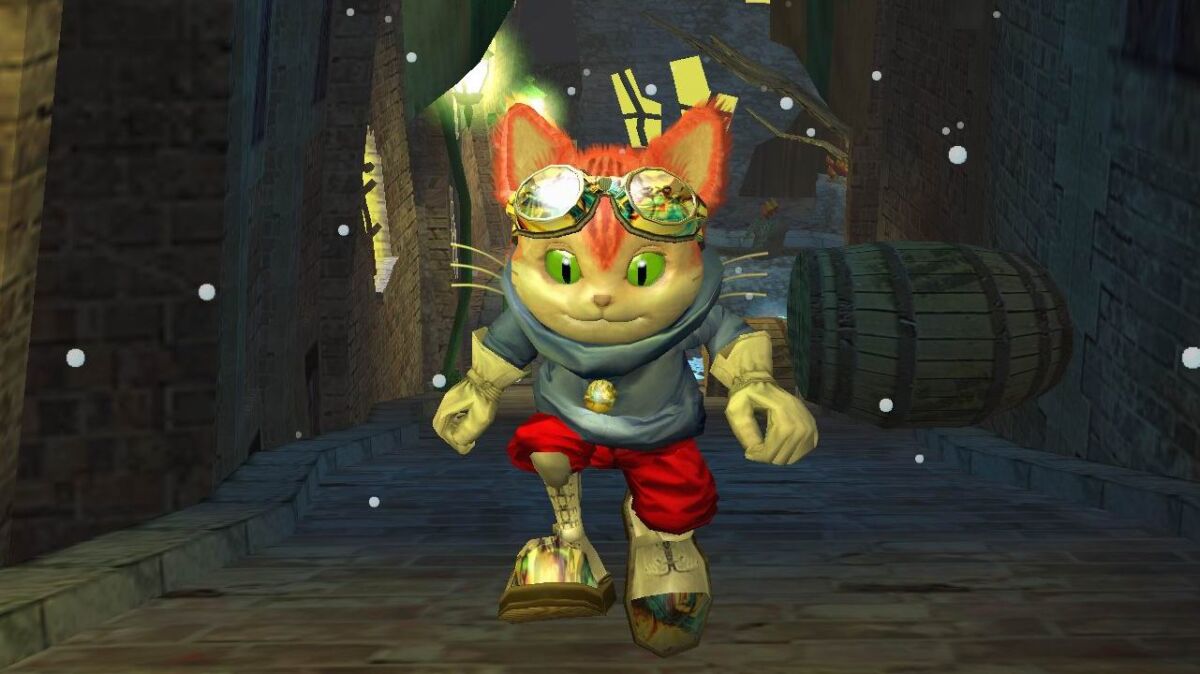Mascots are so important in the video game industry. From the very early days, the likes of Pac-Man really helped to push the brand of the video game itself, and help Atari spin the character off into cartoons, magazines, toys and so much more. However, for every successful video game mascot, there are many that simply don’t cut the mustard and as the years roll by, a layer of hypothetical dust coats their would be merchandise and leaves only a lingering memory of what might have been.
So we took a look at ten forgotten video game mascots, and while they probably aren’t the most forgottenist (that is a word, don’t look it up) video game mascots, they certainly are rather neglected by those who created them.
1. Roland
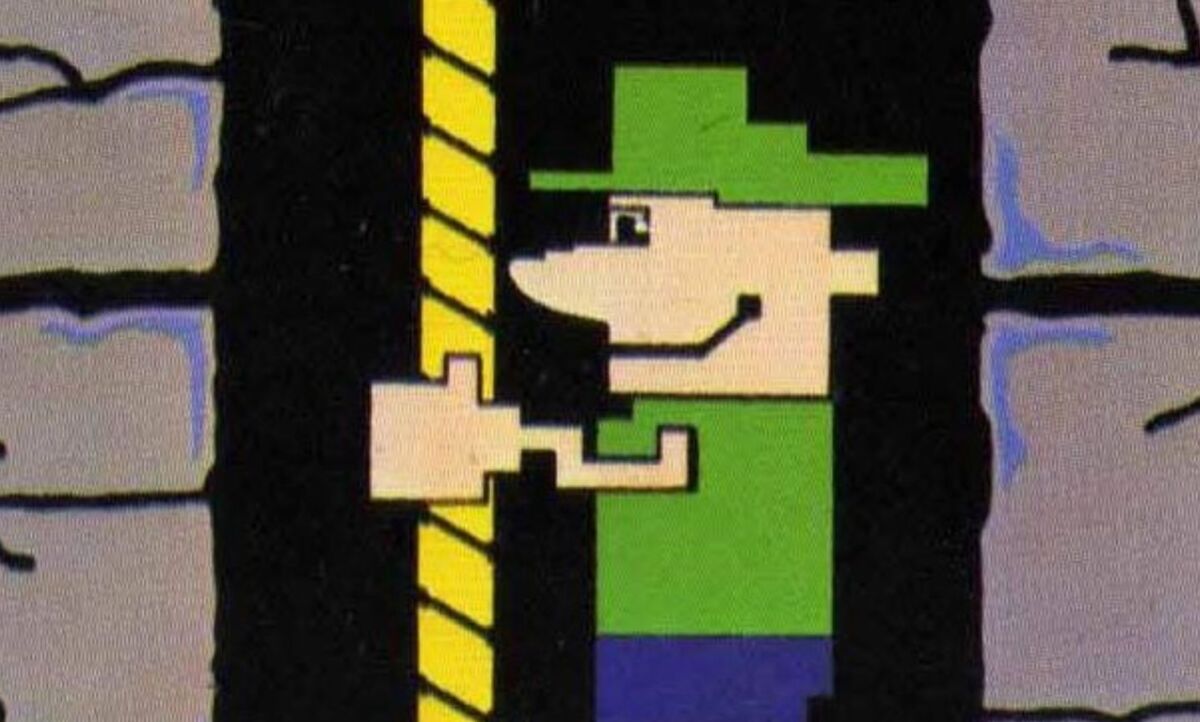
Roland is one of the earliest examples of a mascot being used in different genres in order to create a franchise, and in turn boost sales of Alan Sugar’s Amstrad computers. Roland appeared in a variety of different game genres in the mid-1980s, appearing in around eight games in a two year time span.
One possible reason that Roland has been forgotten in the years since his debut was the lack of consistent design for the character. In Roland in the Caves, he’s a flea, who can jump incredible distances around the cave system. In Roland on the Ropes, he’s an Indiana Jones style adventurer. Meanwhile, in Roland goes Square Bashing, he appears to be a box with arms and legs.
It also didn’t help that few of the Roland games were totally original. With Roland in the Caves and Roland on the Ropes being retitled Spanish games named Bugaboo and Fred respectively. Roland’s other games were merely clones of more popular games, such as Space Panic (Roland goes Digging), Frogger (Roland on the Run) and Jet Set Willy (Roland in Time). While Roland is remembered by a few Amstrad enthusiasts, modern gaming has forgotten this early attempt at a mascot for a home computer games system.
2. Opa-Opa
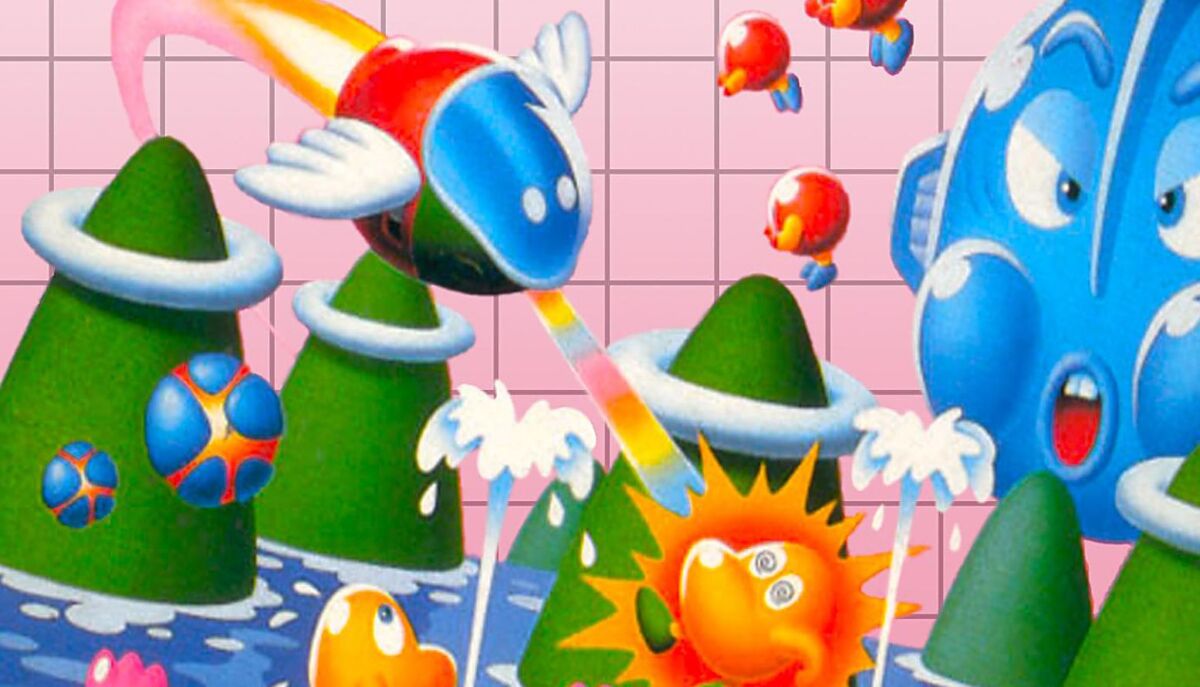
From the mid-1980s onwards, Sega attempted to find a mascot to push their brand. Before envisioning Sonic the Hedgehog, they had previously tried to create a mascot with Alex Kidd, a character who could also make this list, had he not had a modern day remake of his most popular game, Alex Kidd in Miracle World. But Alex Kidd was not Sega’s first attempt, as we need to look to the Fantasy Zone video game series, and its protagonist, Opa-Opa.
Opa-Opa is a sentient flying spaceship that appeared in 2D side scrolling shooters which were all the rage in the late 80s. The series featured three main releases which took the series into the 1990s, with both Fantasy Zone and Fantasy Zone 2 appearing on the Sega Master System (as well as in arcades), and the third main release, Super Fantasy Zone, appearing on the Sega Mega Drive in 1992, as well as some spin offs here and there.
Apart from the odd virtual console release, Sega has never really entertained the idea of bringing the Fantasy Zone IP back. Opa-Opa does get the odd cameo, and has appeared in Sonic & Sega All Star Racing and Phantasy Star Online. It should be noted that the character is similar to another forgotten video game character, Twinbee, from the Konami series of the same name.
3. Aero the Acro-bat
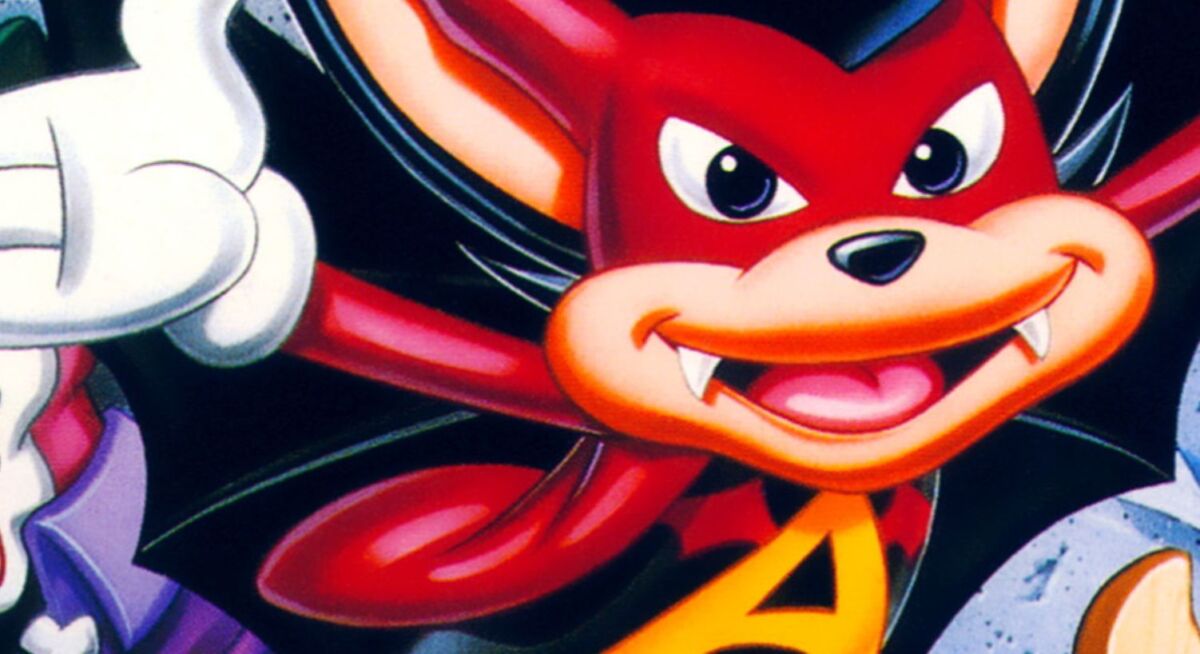
90s gamers may well recall regularly seeing the logo of Sunsoft, who published and developed many games during that period. Sunsoft, which started in the late 70s and is unbelievably still going today, were at their height in the 90s, and like many companies of this era, desired to have their very own mascot.
Enter Aero the Acro-bat, an anthropomorphic circus bat, full of 90s attitude. As was the style at the time, Aero the Acro-Bat was a 2D platformer, in which players had to traverse levels while avoiding/defeating enemies in order to advance the game. It was well reviewed generally and received two more games in the series, Aero the Acro-Bat 2 and Zero the Kamikaze Squirrel, both in 1995. With Saban Entertainment announcing a cartoon series to debut in 1995, the future looked bright for Aero.
The cartoon series would never go into production, possibly due to Mighty Morphin’ Power Rangers becoming a major hit and steering Saban in a different direction. Despite great reviews, no new games would be released following Zero the Kamikaze Squirrel, and the character faded into obscurity. A costume called Aero Acrobat appeared recently in Balan Wonderworld, which is, well, nice, I guess?
In December 2021, Sunsoft tweeted to ask fans if they wanted to see any games return from the dead, so who knows — maybe Aero will fly again.
4. Pitfall Harry

Pitfall Harry is one of the earliest examples of a recognisable character in a video game. While this small collection of squares could only barely be described as recognisable, his figure running through jungles and avoiding traps was unmistakable. Pitfall! was one of the highest selling Atari 2600 games of all time, shifting over four million copies.
Pitfall! released in 1982 and was followed by a single season cartoon and a sequel game in 1984. Super Pitfall, a loose remake of Pitfall 2, was made for the NES in 1986, but was a more of a modern (for the time) 2D platformer that was negatively received. Pitfall Harry Jr would then make his debut in the mid-90s in Pitfall: The Mayan Adventure, and looked similar, yet legally distinct from Indiana Jones. The Mayan Adventure was well received and sold around one million copies, which was very good for the 90s, but nowhere near the four million of the original.
Pitfall! Harry would face his biggest obstacle yet: the jump to 3D, which he’d attempt in Pitfall 3D: Beyond the Jungle on the PlayStation. Despite being voiced by Evil Dead supremo Bruce Campbell, Pitfall Harry Jr’s second adventure received mixed to good reviews. Pitfall!’s swansong was to be Pitfall: The Lost Expedition, which too received mixed to good reviews generally. Sadly, over time, Pitfall!’s uniqueness faded and Pitfall Harry just wasn’t a strong enough character to carry these middling games forward.
5. Ristar

Sonic the Hedgehog is one of the most recognisable mascots in gaming, but Sega always pushed for more. But for every Ryo Hazuki, there’s an AiAi. For every Ulala, there’s a Luke Custer. For every memorable 90s character, there’s a forgotten one and, sadly, Ristar is the latter.
Playing Ristar, you may well notice the levels look very similar to another Sega title, Sonic the Hedgehog. Whereas Sonic has ‘gotta go fast’ Ristar is a slower paced affair, allowing players to explore the levels and enjoy the gorgeous artstyle. Ristar is a star, and has long limbs that can grab enemies, pulling them towards him to headbutt them into oblivion. Ristar’s arms also help him traverse the levels, aiding him across gaps or climbing.
Originally conceived as one of the characters to rival Mario, Ristar wouldn’t actually get any other games, aside from a very different Sega Game Gear version. Ristar received solid reviews, but fell into the shadow of the Sega Saturn (and its impressive 3D graphics) and failed to have much impact on the dying 16-bit era. Ristar may be forgotten, but still lives on, as it was recently released on Nintendo Switch Online.
6. James Pond

With Mario taking 2D platformers by storm, every developer and their family wanted a piece of the pie. Many, many platform games were released in the 90s, and it became the ‘go-to’ for developers looking to make their mark. While many 2D platformers struggled to gain mainstream appeal, James Pond: Underwater Agent became a sleeper hit on the Amiga and Mega Drive, and would spawn two sequels.
James Pond: Underwater Agent’s unique selling point is the underwater levels mixed with standard 2D platforming levels. James Pond, being a fish and not having legs, is naturally more at ease swimming through the watery parts of each level, having to hop around on his fins when not in the water. Armed with his bubble gun, he can fire bubbles to trap enemies and dispatch them.
Underwater Agent was followed up with the even more popular James Pond: Codename: Robocod, which has appeared on a long list of consoles, most recently being released on the Nintendo Switch. James Pond 3: Operation Starfi5h proved less popular, and a 2011 smartphone game called James Pond in the Deathly Shallows was frankly poor. With a 2013 Kickstarter failing to get the funding needed to bring the character back, James Pond will remain a forgotten video game star.
7. Kid Klown

Kid Klown is such a forgotten video game mascot that there’s little info on him online outside of his SNES release, Kid Klown in Crazy Chase. He made his debut in a game (that we’d never heard of) called Kid Klown in Night Mayor World. It seems that developer Kemco licensed the character of Mickey Mouse for a game in Japan, but when they wanted to release it in the west, the game had to be reskinned and Mickey Mouse became Kid Klown.
Kid Klown’s first dedicated game would come in the form of 1994’s Kid Klown in Crazy Chase. Released exclusively for the SNES (although it would be ater ported to the Game Boy Advance), it featured gorgeous 16-bit pixel art graphics and impressive animation. The gameplay was also unique, which saw Kid Klown take on an obstacle course all viewed from an angled, almost isometric perspective. Despite the impressive look, Crazy Chase received mixed reviews.
Kid Klown in Crazy Chase 2 would be released on the PS1 in Japan in 1996, though wouldn’t be released in the west. We didn’t actually know this game existed at all until researching this article, and very little information exists online, but the graphics, while now in 3D, didn’t compare favourably to its 16-bit counterpart. The final game Kid Klown appeared in was The Bombing Islands, before he faded into total obscurity.
8. Dizzy
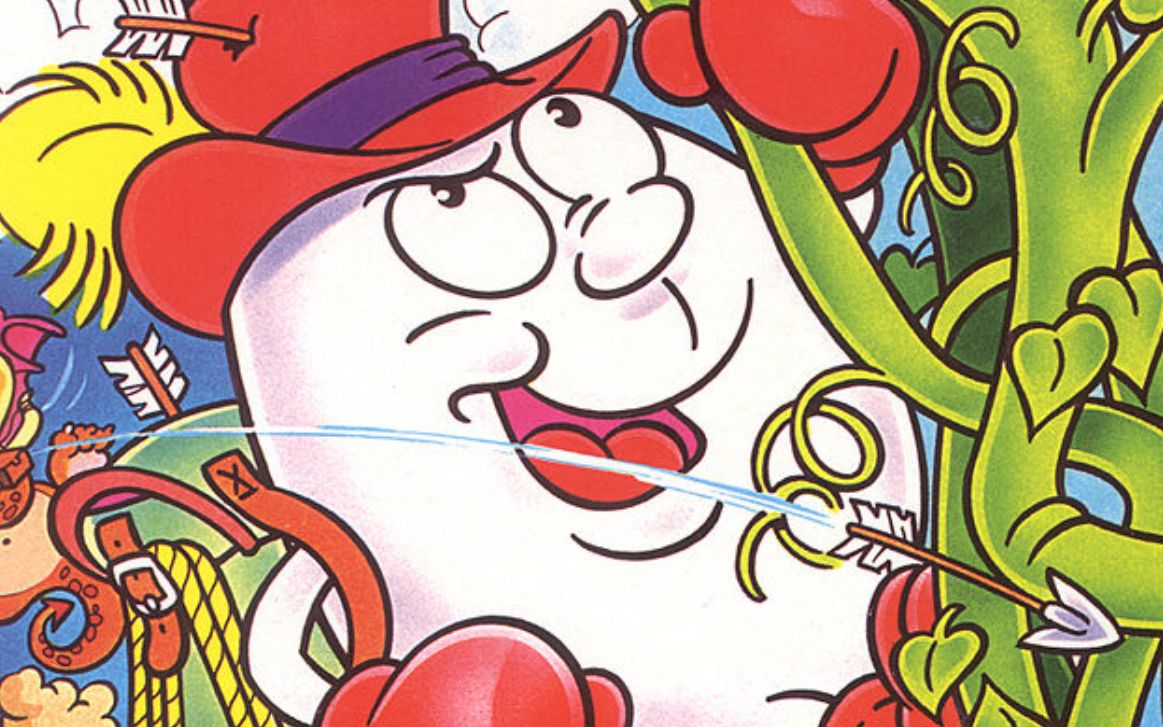
It’s hard to describe Dizzy, as it was unlike so many games released in the 1980s, with over 16 games being released from 1987-1992. Most of the Dizzy games were 2D open world puzzle platformers. Despite Dizzy wearing a pair of oversized boxing gloves, the games were devoid of combat, with the focus being overcoming the fiendish, and often unclear, puzzles. Yes, Dizzy is a boxing glove wearing egg, and was often accompanied by his family on his adventures.
Gameplay limited Dizzy to carrying a limited number of items, and he’d need to use these items either on NPCs or objects in order to progress into new areas of the game. Dizzy’s popularity would die off almost entirely in the 90s, mostly likely due to 16-bit consoles making action platformers more popular, and puzzle platformers becoming less popular.
Dizzy had a rough time of it in the years following. A PS2 update never got beyond its pitch video and a Kickstarter for Dizzy Returns only managed to hit 7.3% of its funding goal. Nevertheless, a number of Dizzy games have been released over the past few years. An iOS and Android remake of Prince of the Yolkfolk came in 2011, and Oliver Twins also released three Dizzy games in between 2015 and 2020.
9. Polygon Man
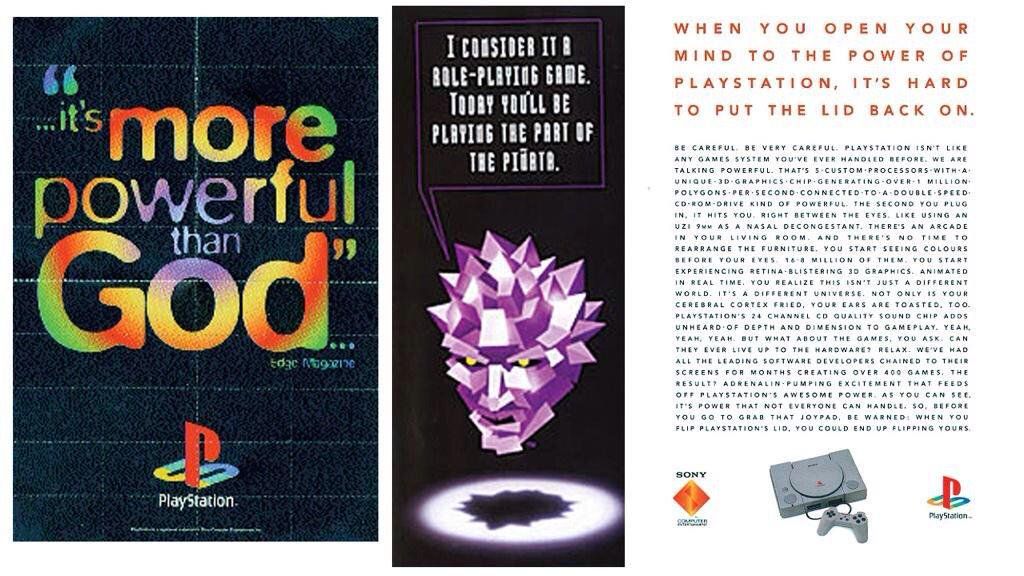
In the 1990s, every major console had its own mascot. Nintendo had Mario, Sega had Sonic, and, of course, Sony had Polygon Man. Wait, what do you mean you don’t remember him? Well, there’s a good reason for that.
Video games had at this point been seen as little more than kids toys, PlayStation wanted to change that, and the branding surrounding the PlayStation was designed to appeal to a more modern audience. But there were internal conflicts within Sony about one major part of the PlayStation project, its name.
Sony Computer Entertainment of America (SCEA) hated the name PlayStation. They believed that the console should be called the PSX, the working title for the PlayStation, and when Sony of Japan refused to change the name, decided to market the PlayStation slightly differently in America. They invented a mascot solely for the American market, and pushed him big time.
The marketing featuring Polygon Man would often appear in magazines and featured various quotes from the man himself. One advert featured a quote which read “it’s more powerful than God…” – SCEA wasn’t messing around. Ken Kutaragi, head of the PlayStation global branding, didn’t see Polygon Man until E3 1995, and he absolutely hated it. Ken was upset that SCEA was investing money into alternative branding for the PlayStation, so Polygon Man was removed, and Sony began looking for other mascots.
Sony tried a few different characters out in adverts, including Battle Arena Toshinden’s Sofia, but settled on Crash Bandicoot. Surprisingly, we hadn’t seen the last of the pointy-faced mascot. Polygon Man would make an unexpected return while also making his video game debut as the main villain and overall final boss of 2012’s PlayStation All-Stars Battle Royale. Though reviews weren’t as bad as many would have you believe, All-Stars was seen as not much more than a Smash Bros knock off, and with servers being shut down in 2018, the game, as well as Polygon Man himself, had been discarded into the annals of history.
10. Blinx
It’s 2002 and the 1990s are becoming progressively smaller in our rear-view mirror. But that didn’t stop developers creating anthropomorphic animal mascots with attitude.
Blinx: The Time Sweeper landed on the original Xbox, and it wasn’t a bad fit, as the Xbox was a platform that over the years has never had a ‘proper’ mascot. Well, aside from Master Chief or that giant green ‘X’.
Blinx was a vacuum wielding cat, who had access to time powers — just your standard platformer stuff, really. As part of his timey wimey shenanigans, Blinx could speed up, slow down, reverse or even pause time. He also had the ability to ‘record’ and create a clone of himself, which was pretty technologically advanced for the time.
Despite some cool mechanics, Blinx: The Time Sweeper underwhelmed and received good, but not great review scores, though it did seem to sell well enough. A sequel was released two years later, in the form of Blinx 2: Masters of Time and Space, and that also received fairly mixed reviews, though fan reaction was stronger.
To this day, Blinx remains a mascot platformer that everyone saw on store shelves, but few seem to have played. In an age of remakes and reboots, no one except for our own Jimmy is calling for more Blinx, but he’s deeply, deeply mentally unwell. I guess time travel couldn’t help this cat, even with nine lives.
READ NEXT: The Best Family Games For All Ages
Some of the coverage you find on Cultured Vultures contains affiliate links, which provide us with small commissions based on purchases made from visiting our site. We cover gaming news, movie reviews, wrestling and much more.


